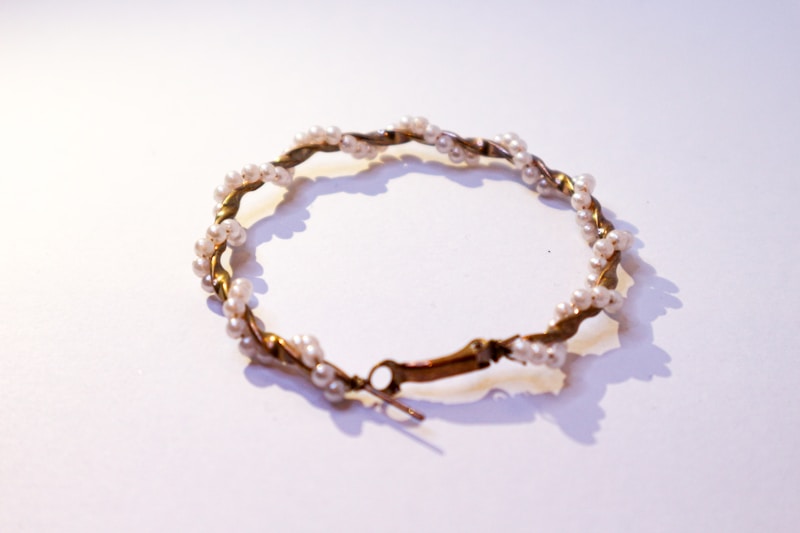Ultimate Guide to Bracelet Maintenance and Care for Longevity
When it comes to fashion accessories, bracelets are among the most popular choices for both men and women. They can add flair, style, and even express one’s personality. However, to keep these beautiful adornments looking fabulous for years to come, proper maintenance and care are crucial. In this guide, we will discuss effective strategies for ensuring the longevity of your bracelets, with a focus on various materials and considerations. Let’s dive into the world of bracelet maintenance!
Understanding Different Types of Bracelets
Before we delve into maintenance, it's essential to understand the different types of bracelets available in the market. This knowledge will help you tailor your care strategies based on the materials used.
| Type of Bracelet | Materials Used | Common Maintenance Tips |
| Beaded Bracelets | Wood, Glass, Stone | Avoid water exposure, clean with a soft cloth |
| Metal Bracelets | Gold, Silver, Stainless Steel | Regular polishing, store in a soft pouch |
| Leather Bracelets | Genuine Leather, Faux Leather | Keep away from moisture, use leather conditioner |
| Chain Bracelets | Gold Plated, Silver Plated | Avoid harsh chemicals, clean with a mild detergent |
General Bracelet Care Guidelines
Regardless of the material, some universal tips can help maintain the beauty and longevity of any bracelet:
Avoid Exposure to Harsh Conditions
Bracelets are often exposed to various elements throughout the day. It’s essential to avoid exposure to harsh conditions such as excessive moisture, extreme temperatures, or sunlight, which may cause discoloration or damage over time.
Regular Cleaning Practices
Regular cleaning can help enhance the lifespan of your bracelet. For metal bracelets, use a soft cloth to remove dirt and oil. For beaded or leather bracelets, use appropriate cleaning solutions, ensuring that you don't soak the material unnecessarily.
Storage Solutions
Proper storage is another critical aspect of bracelet care. When not wearing your bracelets, consider storing them in a jewelry box or soft pouch to prevent scratching and tangling. Chain bracelets should be laid flat, while beaded ones may be best hung to maintain their shape.
Material-Specific Maintenance Tips
Now that we've covered general care practices, let’s look at some more detailed advice based on specific materials.
Metal Bracelets
Metal bracelets can develop tarnish over time, particularly if they are made from softer metals like silver or gold plating. To keep them shining:
- Polish Regularly: Use a specialized jewelry cleaner or polishing cloth to restore shine.
- Store Properly: Keep metal bracelets separate from harder materials to prevent scratching.
- Avoid Chemical Exposure: Remove your bracelets when using cleaning products or engaging in swimming.
Leather Bracelets
Leather bracelets add a unique touch but can easily wear out if not cared for correctly. Follow these guidelines:
- Moisture Control: Never wear leather bracelets when swimming or showering to avoid damage.
- Conditioning: Use leather conditioner periodically to keep the material supple and prevent cracking.
- Color Preservation: Keep away from direct sunlight to prevent fading.
Beaded Bracelets
Beaded bracelets are often delicate and can require a bit more attention:
- Dry Cleaning: Avoid submerging in water. Instead, wipe beads with a dry cloth to maintain their luster.
- Check for Loose Beads: Periodically inspect for any loose strands or beads, repairing as necessary.
- Storage: Avoid placing heavy items on top of beaded bracelets to prevent deformation.
Common Questions About Bracelet Maintenance
Many people have questions when it comes to maintaining their bracelets. Here are some commonly asked questions:
How Often Should I Clean My Bracelets?
Depending on the material and how often you wear them, it’s a good idea to clean them every few weeks or after special occasions. Always follow material-specific guidelines for the best results.
Can I Wear My Bracelets While Exercising?
Generally, it’s best to remove bracelets while engaging in strenuous activities or water-related sports. Sweat, water, and friction can lead to wear and tear.
What Should I Do if My Bracelet Breaks?
If a bracelet breaks, check if it is repairable. Often, restringing loose beads or reattaching clasps can restore your accessory to its former glory; otherwise, consult a professional jeweler for help.
Conclusion
In summary, proper bracelet maintenance and care for longevity are essential for preserving the beauty and function of your beloved accessories. By understanding the materials and following general guidelines, you can ensure that your bracelets last for many years. Remember to clean regularly, store wisely, and protect your investments from harsh elements. With these tips in hand, you'll be well-equipped to keep your bracelets in exquisite condition!
Bracelet care tips